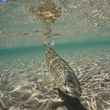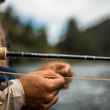Loop knots have an integral place in the way most experienced anglers rig their flies. Despite common misconception, there are a great many loop knots that are exceedingly simple to tie. Sure, there are loop knots that are cumbersome or even difficult to tie, but some of the best loop knots are easy to learn and to tie streamside. But the main reason that most experienced anglers readily use loop knots is that, in a great many scenarios, loop knots provide significant advantages over knots that are fixed to the fly's hook eye.
Following are a few reasons why, if you're not already regularly using loop knots in your fishing, you should be. Even beginner anglers will likely be familiar with the most common of these reasons, but the others may be new information even to some of you who've been at it for a while.




























